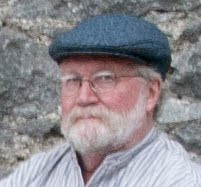Disclaimer for this and anything I post that involves my employer, DeAnza College: I don't speak for them, they don't speak for me, they pay me. All photos by me unless otherwise noted.
I get to play with some of the coolest toys.
I get to play with some of the coolest toys.

The above photo shows a silhouette of the Minolta MS-15 star projector in the DeAnza College Planetarium. More precisely, it was in the DeAnza Planetarium until just about a year ago.
The MS-15 was Minolta's first planetarium in an American facility (installed in 1970), and represented the company's serious entry into a tiny, specialized, expensive market dominated before that by legendary names like Spitz and Zeiss. The planetarium branch of Minolta (now Konica Minolta) did well after that and is now a revered name in the niche -- just like Spitz and Zeiss (and Goto).
The DeAnza Planetarium and its revolutionary MS-15 was inaugurated with great fanfare in '70, and rightly so. It was then -- and, I think, today remains -- the largest planetarium in the western U.S. that is operated by a Community College, and has provided a great indoor astronomical experience for hundreds of thousands of schoolchildren and college students for the past generation.
Problem was, it got old. Really, really old. The MS-15's projected useful lifetime in 1970 was 15 years... but it was kept working by innovation, desperation, magic, and duct tape for more than twice that. By the time it was pulled down in 2006, it had even lost Arcturus, and was taking more of the technical director's (Karl von Ahnen's) time in upkeep and cajoling than his actual shows were.
So, out with the old, in with the new:
The planetarium is nearing the end of a year-and-a-half thorough renovation, inside and out. The heart of the renovation is its new star (and planet) projector -- a spiffy-new, state-of-the-art, Konica Minolta Infinium S star machine. Our Infinium, like the old MS-15, will be the first of its generation of Minolta machines installed anywhere outside of Japan.
Installation, fine-tuning, and -- especially -- training will take several more months before the facility is ready to swing into full operation. Meanwhile, it will see limited use for College classes and some school shows during the spring and summer quarters. The official grand opening will be in the Fall.
When fully-operational, the facility's capabilities will be stunning, and I'll have more posts as time goes on to detail them. For the time being, I'll just mention that the Milky Way will actually be a quarter of a million individual points of light instead of a ghostly smear, that some nebulae and galaxies will be projected with sufficient resolution and realism that one can actually use binoculars inside our 50-foot dome to see them better, and that the positions of the planets (for any date and time) can be shown as seen from any of them, not just Earth!
For more of the astonishing capabilities of the Infinium S, please click here to see Karl von Ahnen's "top ten list" style rundown.
 A member of the Minolta installation team aligns the Infinium-S horizontal axis on March 20th. The team of five technicians will be here for several more weeks, finishing and fine-tuning the installation of hardware and software... and setting up a training regime for the wetware (us operator types.)
A member of the Minolta installation team aligns the Infinium-S horizontal axis on March 20th. The team of five technicians will be here for several more weeks, finishing and fine-tuning the installation of hardware and software... and setting up a training regime for the wetware (us operator types.)Dry but possibly necessary background bureaucratic information: The planetarium is not operated by DeAnza College's Physical Sciences, Mathematics, and Engineering Division (of which my Astronomy Department is part.) It is operated by a fiscally self-sustaining unit of the College called "Community Education," under the very capable direction of Dr. Caron Blinick, a former English Professor. Dean Blinick and I (as head of DeAnza's academic Astronomy department) coordinate the facility's use, balancing needs of instruction, community outreach, and Community Ed's mandate to balance its books. I like the arrangement -- there's no way in the world or out of it that I would want the responsibility of scheduling grade schools' field trips, for example -- but.. well, let's just say that it's a good thing that we all like each other and leave it at that.
Photos for the time being:
If you've ever remodeled a kitchen or a bathroom, you know how strong the urge is to make something look different on the outside, too, just... well... just because. Same goes for remodeling your star projector. Here's how the planetarium dome looked for years:
 Photo taken on March 9th, 2007. The switch of dome color from red to blue was not based on political considerations. Really.
Photo taken on March 9th, 2007. The switch of dome color from red to blue was not based on political considerations. Really. Sherwood ponders a learning curve, March 20th. Photo by Karl von Ahnen.
Sherwood ponders a learning curve, March 20th. Photo by Karl von Ahnen.When completely installed, the machine will have a very sleek look. Today, everything's exposed (sort of like Darth Vader without his helmet.) The gizmos in the foreground in the above picture are for projecting the positions of the planets, Sun, Moon, and programmable transient events (like comets or near-earth asteroids) against the background of the stars. The stars themselves (and other things that don't appear to move relative to one another, like galaxies, nebulae, and other deep-space objects) are the job of the star-ball above my head. Both parts are equally vital to a planetarium's working -- and contribute about equally to a projector's cost. That cost, retail, for this machine would be about $2 million, but don't expect to find one on the shelf at WalMart.
 Vader's helmet (the shell for the starball). Caution, indeed. This shell is individually fabricated from the aluminum casting on up. Dents are not welcome.
Vader's helmet (the shell for the starball). Caution, indeed. This shell is individually fabricated from the aluminum casting on up. Dents are not welcome.

If you've been interested enough to read this far, please visit Karl von Ahnen's much more extensive account of the renovation/resurgence of the planetarium.
(Karl is a delight in all ways except one: accompanying him on commercial air travel is an extreme exercise of one's patience. No fault of his, really, since he's had it since the '60's -- but that beard invariably attracts a great deal of attention from TSA droids. Thank God he doesn't wear a turban. Karl treats it all with great equanimity, but the rest of us have been known to fume.)
 Vader's helmet (the shell for the starball). Caution, indeed. This shell is individually fabricated from the aluminum casting on up. Dents are not welcome.
Vader's helmet (the shell for the starball). Caution, indeed. This shell is individually fabricated from the aluminum casting on up. Dents are not welcome.
My future workstation. This little set of computer controls replaces the five times as much control surface (conservatively speaking) that was needed to operate the much more primitive MS-15.
If you've been interested enough to read this far, please visit Karl von Ahnen's much more extensive account of the renovation/resurgence of the planetarium.
(Karl is a delight in all ways except one: accompanying him on commercial air travel is an extreme exercise of one's patience. No fault of his, really, since he's had it since the '60's -- but that beard invariably attracts a great deal of attention from TSA droids. Thank God he doesn't wear a turban. Karl treats it all with great equanimity, but the rest of us have been known to fume.)





3 comments:
It's entirely possible that you have the single coolest job in America except for "Astronaut".
Which, I'm sorry, is still cooler.
Unless you, you know, whack out and do the whole love-triangle, cross-country-trip, diaper, attempted kidnapping Astronaut thing.
But aside from that, Astronaut is still the coolest job in America.
And yours runs a very close second.
ronnie
Y'know, I attended junior high in San Jose and I'm pretty certain I took a field trip to the De Anza planetarium around 1972, which would have made me one of the MS-15's earliest audiences. Although I'm sure I was impressed with the star projector, what I most remember was that the staff had constructed a model of Betelgeuse about 2 feet in diameter out of glued-together styrofoam cups with a red light bulb in the middle. That was the moment that ignited my life-long intellectual passion for styrofoam cups.
My entire life seems to involve following you around 30 years retroactively. I'll book my trip to Ireland for 2036.
Brian, 1971 - 1972 was a big year for spheres of glued-together styrofoam balls. My then-wife and I made one then for a "chandelier" for the living room ceiling light in our grad student housing at UC. I never tried igniting it, though.
You should visit Ireland significantly before 2036, though, unless you want to spend a bunch then to visit someplace that will probably look a whole lot like suburban USA. Money -- lots of it -- is changing the Republic rapidly. Take a look at this for an example.
Post a Comment